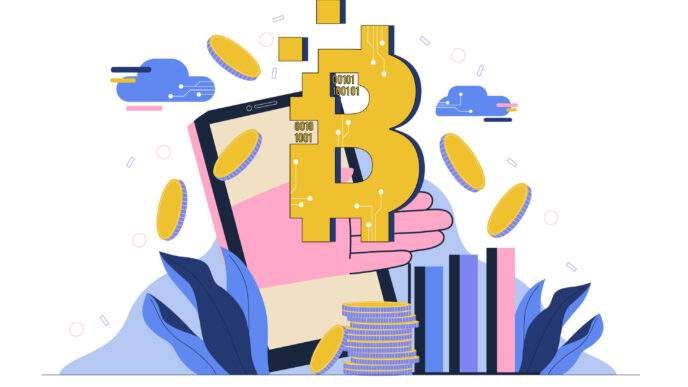The OP_RETURN Debate has recently caused a stir within the bitcoin community. Bitcoin stands as a groundbreaking peer-to-peer currency, engineered for financial sovereignty and unshackled from centralized control, embodying Satoshi Nakamoto’s visionary design of a trustless monetary system.
Introduced in 2009, it leverages proof-of-work and a decentralized network of nodes to enable individuals to transact freely, free from the influence of banks or governments. This design prioritizes the integrity of money as a store of value and medium of exchange, reflecting Nakamoto’s intent to create a resilient alternative to fiat currencies.
For over a decade, bitcoin has thrived as a beacon of economic autonomy, drawing adherents who value its unalterable rules and global accessibility.
Yet, as of June 14, 2025, the ongoing OP_RETURN debate has emerged as a critical juncture, challenging bitcoin’s core identity. OP_RETURN, a script opcode introduced in 2014 to embed up to 80 bytes of data in transactions, was designed to reduce UTXO bloat from earlier data-stuffing practices.
However, recent proposals, such as Peter Todd’s pull request #32359, to expand this limit—potentially up to the 1MB block size—have sparked intense discussion. This controversy pits the purity of bitcoin’s monetary purpose against a push for data-driven experimentation, such as timestamping, NFTs, and Ordinals, which leverage the blockchain for purposes beyond financial transactions.
At the heart of this debate lies a fundamental tension: whether bitcoin should remain a specialized ledger for value transfer or evolve into a general-purpose data platform.
Proponents argue that expanding OP_RETURN could streamline development and enable innovative use cases, such as sidechains, while critics warn it risks diluting bitcoin’s focus, increasing node costs, and eroding its decentralized ethos.
This clash echoes past scaling disputes, like the 2017 block size wars, and underscores the delicate balance between adapting to new demands and preserving the principles that define bitcoin’s strength. As of June 14, 2025, the community appears divided, with developers like Todd and Luke Dashjr advocating opposing views, and the outcome poised to shape bitcoin’s future trajectory.
For those guided by bitcoin’s original vision of sovereignty and minimalism, this debate is more than technical—it’s philosophical. The push to expand OP_RETURN raises questions about the integrity of the network, the role of individual node operators, and the risk of centralization through data-heavy use.
As the discussion unfolds, it forces a reckoning: will bitcoin stay true to its roots as sound money, or will it embrace experimentation that critics argue could compromise its foundational values? This article explores these tensions, offering a perspective rooted in bitcoin’s essence and the principles of its staunchest defenders.
Background on OP_RETURN
OP_RETURN emerged as a script opcode in 2014, designed to allow the inclusion of up to 80 bytes of arbitrary data within unspendable transaction outputs on the Bitcoin blockchain. This innovation addressed the inefficiencies of earlier data-stuffing methods, which cluttered the UTXO set (a database of spendable coins) and increased the computational burden on nodes.
By providing a controlled way to embed data—marking it as unspendable—OP_RETURN aimed to balance the network’s functionality with its primary role as a monetary ledger, reflecting bitcoin’s focus on efficiency and scalability.
Historically, OP_RETURN has been used for practical purposes like timestamping documents and limited data storage, serving as a lightweight tool for decentralized proof-of-existence. However, in recent years, particularly by June 14, 2025, its use has increasingly shifted toward innovative but data-intensive applications like Ordinals and NFTs.
These developments, often achieved through workarounds such as inscribing data in SegWit fields or layered protocols, have pushed the boundaries of the 80-byte limit, transforming Bitcoin into a platform for digital collectibles and other use cases. This shift has sparked debate about whether such applications align with or undermine Bitcoin’s original intent as a peer-to-peer currency.
The Proposed Update
One of the most notable proposals in the OP_RETURN debate, as of June 14, 2025, is a pull request attributed to Peter Todd (#32359), which suggests removing the existing 80-byte cap on data embedded via OP_RETURN.
This change would potentially allow data payloads to expand up to the full 1MB block size limit, significantly increasing capacity for embedding information directly into bitcoin transactions. Introduced to address evolving use cases and technical inefficiencies, the proposal has gained traction among some developers who see it to enhance the protocol’s flexibility, leveraging Bitcoin’s existing infrastructure.
Arguments in favor of this update highlight several benefits. Proponents argue that removing the cap would simplify bitcoin’s codebase by eliminating the need for workarounds, such as multi-signature schemes or excessive transaction outputs, that currently clutter the UTXO set (a database of spendable coins).
Additionally, it could reduce network strain caused by these inefficient methods, potentially improving performance. Another key point is the potential to enable sidechain innovations, allowing bitcoin to serve as a foundation for layered solutions that enhance scalability and support new applications, all while keeping data within the blockchain’s secure framework.
However, the proposal faces strong counterarguments rooted in bitcoin’s monetary focus. Critics contend that lifting the 80-byte limit risks transforming bitcoin into a general-purpose data ledger, diluting its primary role as a peer-to-peer currency and store of value.
This shift could lead to blockchain bloat—potentially adding significant storage demands annually—raising resource requirements for node operators and possibly excluding smaller participants, thus threatening decentralization.
While some argue modern hardware can handle larger blocks, critics warn that even small increases burden low-resource nodes, clashing with the minimalist vision of Satoshi Nakamoto and purists like Giacomo Zucco, who argue that data storage is better suited to alternative blockchains or off-chain solutions.
Giacomo Zucco, a leading voice in the bitcoin community, champions the notion that bitcoin’s strength derives from its decentralization and censorship resistance, safeguarded by a minimal, secure protocol built on proof-of-work. Like Zucco, Nakamoto’s whitepaper emphasizes a lean system focused on financial transactions, empowering individual node operators to enforce consensus rules and prevent any single entity—be it a miner, developer, or corporation—from dictating its direction.
Expanding OP_RETURN undermines this vision by inviting bloat, which could raise node operational costs and centralize control among well-funded data users. This shift risks turning bitcoin into a platform for data-intensive applications like NFTs or Ordinals, rather than a robust financial network.
Zucco and other purists would likely argue that proof-of-work and the fee market should prioritize financial transactions, reflecting bitcoin’s original intent as a currency and store of value, while data storage belongs on second layers or alternative chains.
Preserving this focus is essential to maintaining the decentralized soul that defines bitcoin’s essence, a principle that node operators must uphold to honor its founding ethos.
Community Divide and Risks
The OP_RETURN debate has exposed a deep divide within the bitcoin community, particularly among developers and users, as of mid-June 2025. On one side, figures like Peter Todd and Antoine Poinsot support expanding the OP_RETURN limit to 4MB in Bitcoin Core’s version 30, set for release in October 2025, arguing it aligns with miner practices and reduces harmful workarounds.
In contrast, developers like Luke Dashjr argue that such changes dilute bitcoin’s monetary purpose, promoting Bitcoin Knots—a fork of Bitcoin Core with stricter filters, defaulting to a 40-byte OP_RETURN limit—as a countermeasure.
This split extends to users, with Bitcoin Knots nodes surging from 2% to 11% by June 2025, signaling a preference for a leaner blockchain, while others embrace the flexibility of larger data capacities, highlighting growing tension over the network’s future direction.
This division carries significant risks that could undermine bitcoin’s accessibility, a cornerstone of its decentralized ethos. Expanding OP_RETURN could lead to fee spikes as data-heavy transactions compete for block space, disproportionately burdening smaller users and node operators with limited resources.
Proponents argue that fee markets and prunable OP_RETURN outputs will regulate data use, but critics warn that spikes could still exclude low-resource participants. Node fragmentation is another concern, as differing mempool policies between Knots and Bitcoin Core nodes could disrupt transaction relay, weakening the unified network that secures Bitcoin.
While the change avoids a hard fork by adjusting mempool policy rather than consensus rules, it risks eroding trust in Bitcoin Core’s governance, reminiscent of the 2017 block size wars that fractured the community. Such tensions could weaken Bitcoin’s security and trustless environment, posing a critical challenge to its long-term viability.
Preserving Bitcoin’s Essence
Despite Bitcoin Core’s upcoming increase of the OP_RETURN limit to 4MB in version 30, set for October 2025, the community must resist further expansions to safeguard bitcoin’s identity as sound money, ensuring the blockchain remains a dedicated platform for financial transactions rather than a general-purpose data store.
This stance aligns with the vision of figures like Giacomo Zucco and Luke Dashjr, who, echoing Satoshi Nakamoto’s whitepaper, emphasize that bitcoin’s strength lies in its role as a sovereign currency, secured by proof-of-work and upheld by the collective vigilance of node operators.
By adopting stricter node policies, such as Bitcoin Knots’ 40-byte default, the community can protect the network from bloat and centralization, preserving its accessibility and decentralized ethos. Node operators, as the backbone of this system, must actively enforce these boundaries to honor Bitcoin’s original intent.
Education and broader participation are key to reinforcing this decentralization, echoing Zucco’s call for an empowered user base. Encouraging more individuals to run nodes—whether through Bitcoin Core or stricter variants like Bitcoin Knots, which reached an 11% node share by June 2025—will strengthen the network’s resilience against data-driven changes and ensure diverse voices shape its consensus.
This grassroots effort can counter the influence of well-funded actors pushing for data-intensive applications, keeping bitcoin aligned with its monetary purpose. As the community navigates this critical juncture, fostering a culture of node operation and technical literacy will be essential to maintaining the network’s integrity.
Ultimately, the allocation of block space should be guided by the free market of fees, not arbitrary policy adjustments, allowing economic demand to prioritize financial utility over data-intensive applications. While proponents argue fee markets and prunable OP_RETURN outputs will limit bloat, critics insist financial transactions must remain the priority to avoid fee spikes that burden smaller users.
This approach respects bitcoin’s design as a trustless system where value, not whims, dictates its evolution. Let us act now to protect bitcoin’s soul by running nodes, educating others, and trusting the market to steer its course, ensuring it remains a beacon of financial sovereignty for generations to come.















